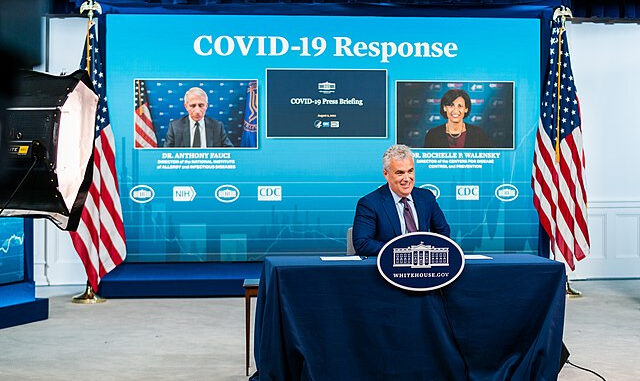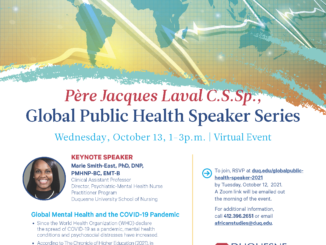
by Colleen Hammond | editor-in-chief
April 7, 2022
As Covid-19 cases decline across the country (likely temporarily), society begins to take a collective breath to reflect on the destruction the pandemic has caused over the past two years. With the scratch of the head, many find themselves asking, “How could this have happened? Where did we go wrong?”
The answer: There is plenty of blame to go around.
Although the former presidential administration was significantly more dangerous in their nightmarish decision-making, both the past and present presidents made egregious errors when handling the pandemic. While the former presidential administration chose to recklessly deny the pandemic altogether until acknowledgement became both unavoidable and politically convenient, the current administration has struggled to distribute testing and quell case surges in the face of the Delta and Omicron variants.
But despite their vast political differences, one constant remained: The government agency tasked with upholding, maintaining and protecting public health was ill-prepared for a catastrophic event that had been brewing on the horizon for decades.
For years, epidemiologists and public health researchers have warned about the potential of a highly contagious, air-borne respiratory illness rapidly spreading through our ultra-globalized society. Still, regardless of the warnings, administration after administration continued to divert funds away from pandemic preparedness plans.
Over the past two years, the cost of these decisions has proven to be millions of lives here and abroad.
However, the future of public health does not have to be as bleak as its past.
In the wake of blistering criticism over pandemic handling and preparedness, the Centers for Disease Control and Prevention Director Rochelle Walensky announced plans to revamp the entire agency on Monday.
Walensky stated in an agency-wide email that a one-month review of the CDC’s “structure, systems and processes” was about to begin, with the intention that adjustments to procedure would be made based on the review’s findings.
While this is a step in the right direction, the changes needed within the CDC speak volumes about the necessary attitude change we need to start seeing society wide to protect public health.
For Americans, we often take a reactionary approach to our health. Due to the exorbitant costs of the healthcare system in this country, many people find themselves putting off treatment as long as possible, hoping the problem will go away on its own. When these issues inevitably become worse over time, they often become more difficult (and expensive) to treat. This practice has become the norm in the face of hefty medical bills and nearly inescapable medical debt.
In conjunction with these steep prices, public health agencies, like the CDC, do not often prioritize preventative medicine, and many Americans feel more than comfortable skipping their yearly physical, regular dental cleaning, or routine cancer screenings.
This leaves many people in the crushing position of suffering the late stages of a medical condition that could have easily been detected earlier.
While shifting these long-held attitudes is no simple task, there is hope on the horizon for change. During the upcoming revamp of the CDC, agency officials should make preventative health their priority.
As we have seen since the genesis of the Covid-19 pandemic, the best way to protect people from dying from this illness is to keep them from contracting the virus in the first place. We did this through stay-at-home orders, mask mandates and vaccine requirements. Clearly, many Americans recognize the inherent value in preventative medicine and have done their best to avoid illness by abiding by guidelines.
Luckily, as the CDC forges ahead into the public health crises beyond Covid-19, the same preventative principles can be applied.
For example, although the annual flu shot is widely available, reception rates in the 2021-22 flu season hovered around 50%, according to the CDC.
In addition to preventative measures, the CDC revamp should also take a large focus on holistic health. Frequently, symptoms can be viewed as occurring in a vacuum, as if the vast systems of the body are not deeply interconnected. Medicine at its worst siloes organs and systems and refuses to look at a person as a complete being. But, when specialists work together, it can be easier to recognize the links between various medical problems, their potential origins and likely treatments.
So often, people are told that “a healthy diet, exercise and lifestyle changes” can make all the difference to one’s health. But our public health organizations often fail to recognize and prioritize the impact of lifestyle on long-term health. Instead, many of us are left to put bandaids on problems that have become bullet holes over time without proper prevention.
As the CDC reflects on the failures of the past in the hopes of correcting the course of the future of public health, preventive medicine and holistic health need to come to the forefront of decision making to ensure the long-term health of the American people.



